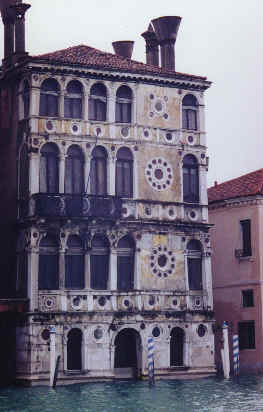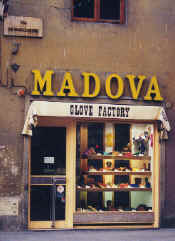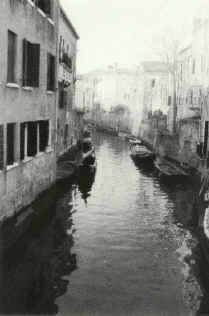
|

|
|
|
Once upon a time, long, long ago, in a land far, far away, a city was built in a lagoon, Venezia . . . today called Venice. Invaders from the north frightened a small group of people in northeastern Italy. To protect themselves, the inhabitants moved and built a new city that could be defended. Small islands in a quiet lagoon seemed perfect. As a result, the newcomers became seafarers. And Venezia eventually became an empire. |
| Canals shaped the city islands. The Grand Canal is so wide there are only three bridges. The most famous is the Rialto. Lots of small boats transport people up and down the canals and across, from point to point. All material goods are transported on oversized, motorized row boats. Some of the canals are so small that only the smallest of boats, called gondolas, can traverse them. Today, the gondolas are used mostly by lovers who dream of that city so long, long ago. | |

|
The homes along the Grand Canal were built to impress. Their facades are dramatic, and show a strong Eastern influence. Their lacey, pointed or rounded windows remind one of India or Thailand. Sometimes these windows are grouped together, at other time you will see just one, alone in all its glory. Each is unique and more handsome than the next. The first floors of the buildings |
|
are on the canal level and are not used for living. This is where a boat is stored and also how food and supplies enter the house. The canals often rise and flood the first floors of the buildings. In some of the grand palaces the first floor is beautifully tiled to create a foyer effect. In the more modest homes, along the smaller canals, the boats are "parked", moored to a pillar next to the entryway.
|
|

|
|
|
|
During the golden years of Venice, 1200 through 1500, the most majestic of the buildings were constructed. Huge churches were built along the canals—like many of the private buildings, these too were designed to impress. Some of the church facades are just as dramatic as the homes. Santa Maria della Salute, the most photographed, stands very bold and across from the famous St Marks square. Every hour the bells, including the |
| famous campanile tower in St. Mark’s square, toll loudly and clearly. But there is a darker side to these buildings: while these churches were being constructed, Jews were required to live in the walled ghetto away from the center. And today, the original wall bears many plaques reminding us of the Holocaust. |
|
 |
Today, Venice is a tourist city, and still a magical place. Only 70,000 people live here, many of whom are over sixty-five. Yet over twelve million tourists visit each year. |
| Most tourists arrive in the summer months. November may be cooler and damper than the summer, but there are far fewer tourists, no lines, and lots of quiet in which to see and reflect … and shop for gloves! |  |
 |
The best way to enter Venice is by water from the airport. This route gives a better sense of how far from everyday reality the city really is. Arriving by water emphasizes Venice’s spiritual distance from the rest of Italy—and creates its otherworldly, magical effect! |
|
Harriet
H. Ahouse | Independent Travel Consultant |